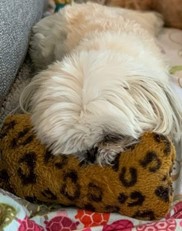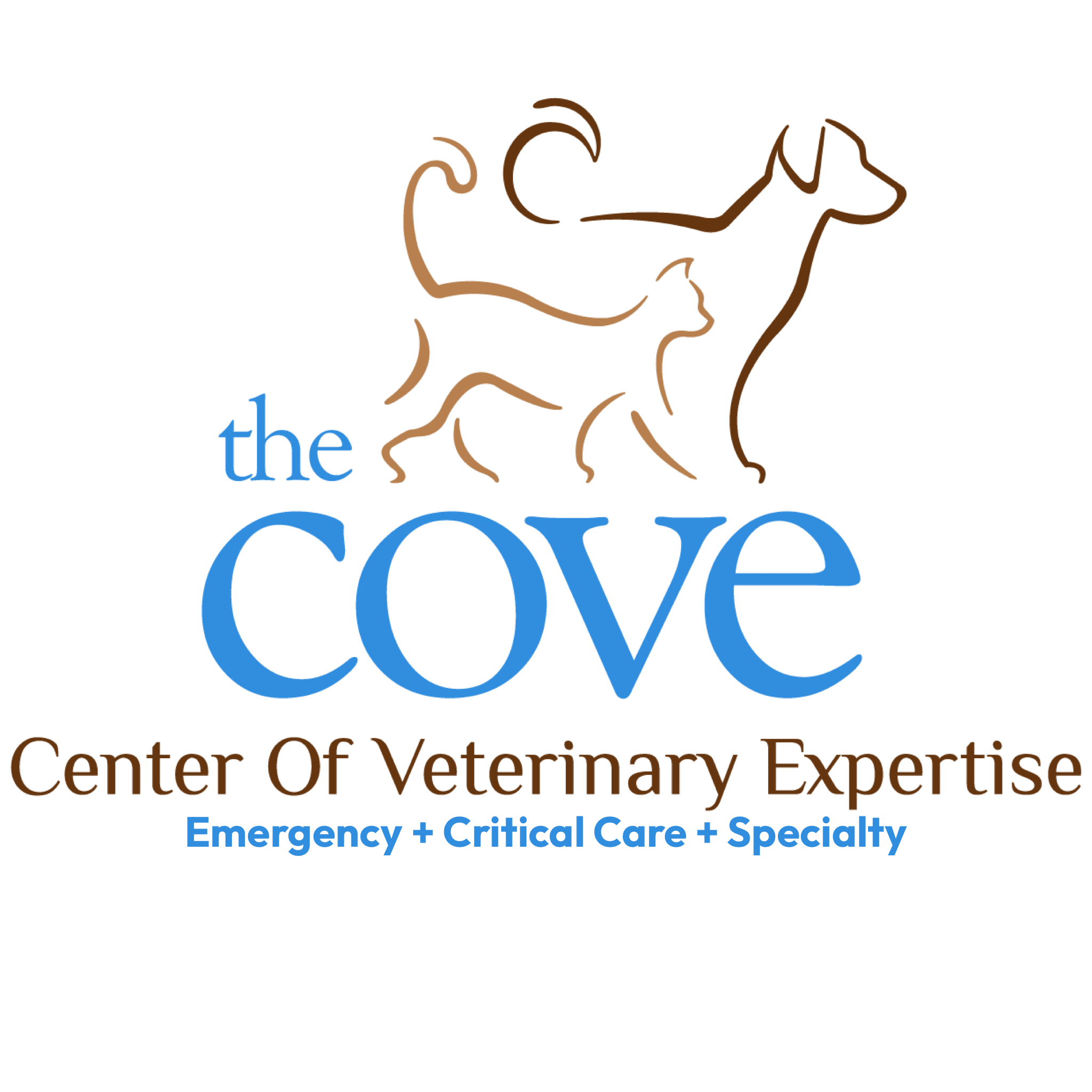By Rachel Griffin, LVT
There are few things scarier than hearing your beloved pet needs to undergo anesthesia. But rest assured that here at The COVE, we do a deep dive into your pet’s medical history and develop a specific anesthetic protocol that is safest for your pet. Just ask Webster Chi!
Webster Chi is an 11-year-old male neutered Shih Tzu, and he is considered a four-legged child in his household. When he needed a dental procedure, his owner wasted no time in being referred to The COVE for advanced dental care from Dr. Colleen Fox and anesthesia oversight by The COVE’s board-certified cardiologist, Dr. Merilee Small.
Upon exam, Webster Chi had a heart murmur and mild periodontal disease, which meant he needed anesthesia for comprehensive oral health assessment, professional cleaning, and full-mouth intraoral radiographs. To better prepare for anesthesia, a cardiac consultation was performed by Dr. Small. In addition to confirming his heart murmur, Dr. Small discovered that Webster Chi has a rare type of cardiac disease we see in dogs, called hypertrophic cardiomyopathy. This put him at an increased anesthetic risk.
To minimize that risk, the COVE’s anesthesia team, Dr. Fox, and Dr. Small collaborated and created a specific anesthetic protocol tailored for Webster Chi. Pain medication, cardiac-safe anesthetics, and emergency drugs were all selected and dosages specifically calculated for him. With this preparation and drug selection, the potential risks and associated complications were able to be greatly reduced.
Webster Chi underwent anesthesia for his dental procedure, during which Dr. Fox discovered three teeth that needed extraction. To alleviate discomfort, Webster Chi received dental nerve blocks in addition to injectable pain medication. He did well under anesthesia and he recovered smoothly.
Webster Chi was monitored in the hospital for four hours postoperatively. He had no signs of discomfort or secondary cardiac complications, and he was discharged to his mom’s loving care. Specific post-operative instructions were given, including giving him oral pain medication three times daily for 5 days, feeding him a softened diet, and restricting access to chew toys until his recheck appointment. We also instructed his mom to monitor his respiratory rate and effort 3-4 times daily for the following 5 days. If an increase in respiratory rate or effort was noted, it could be an early indicator that Webster Chi was experiencing a cardiac complication.
After discharge, the dentistry and cardiology team followed up with Webster Chi’s mom frequently via phone and email to check on him. She followed the discharge instructions perfectly! Thankfully, Webster Chi did not experience any pain and his respiratory rate and effort remained normal at home.
Two weeks after his procedure, Webster Chi was rechecked by Dr. Fox, who found his extraction sites were healed. He was allowed to return to normal dry food and play with his toys again! One toy that Webster Chi was particularly thrilled about reuniting with was his “Fluffy” (pictured below).

Due to Webster Chi’s health conditions, his anesthetic risk was increased. But with collaboration among the doctors and team at The COVE, we were able to ensure he had a safe anesthetic experience. Don’t let anesthesia be the reason you avoid dental or surgical care for your beloved companions. The risks to your pet’s health are often greater when not addressing the primary issue, mainly the dental or surgical treatment. If you have any questions or concerns about anesthesia for your pet, please give us a call.
About Us
The COVE’s veterinarians and staff wholeheartedly embrace the core values of community, collaboration, commitment, compassion, and integrity. This focus ensures that pets, the people who love them, and their primary care veterinarians have as positive and affirming a healthcare experience as possible, regardless of the circumstances that bring us all together.
